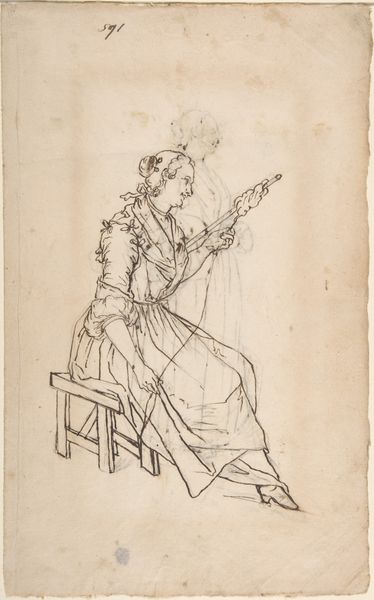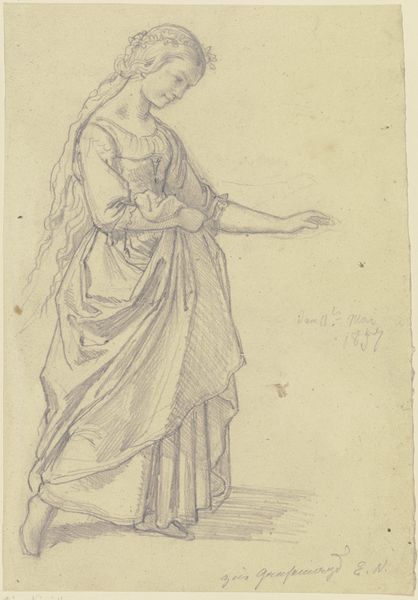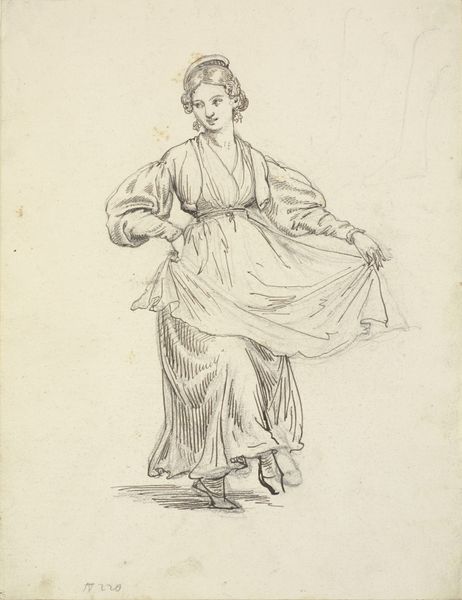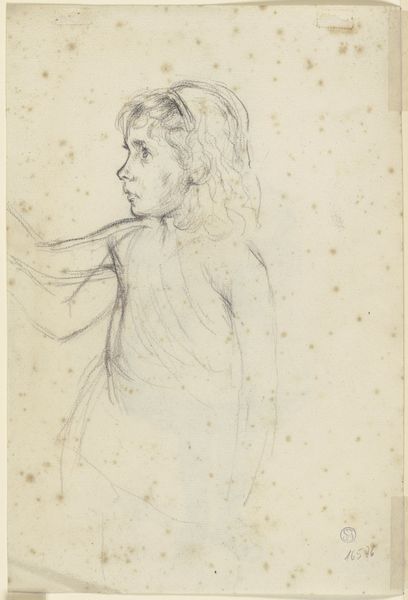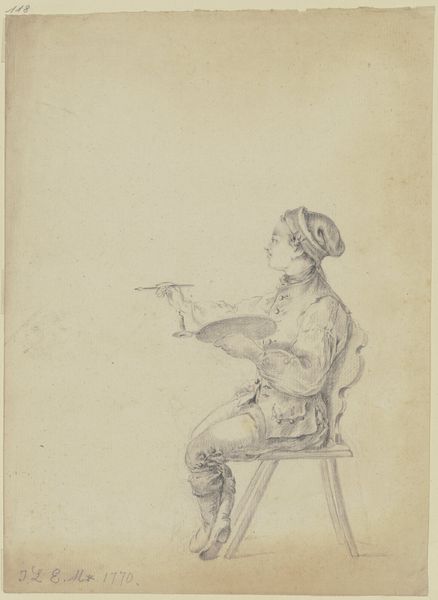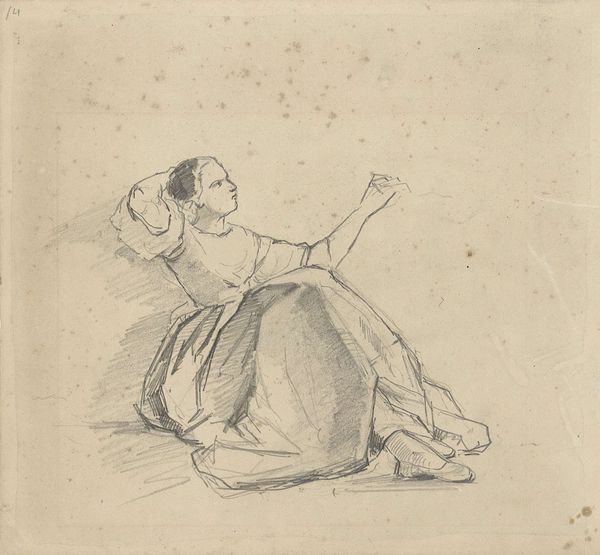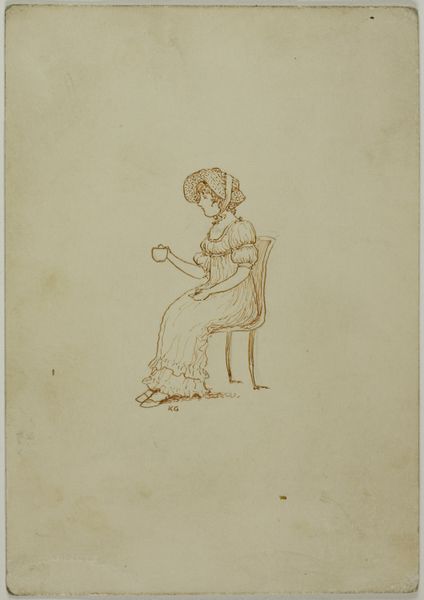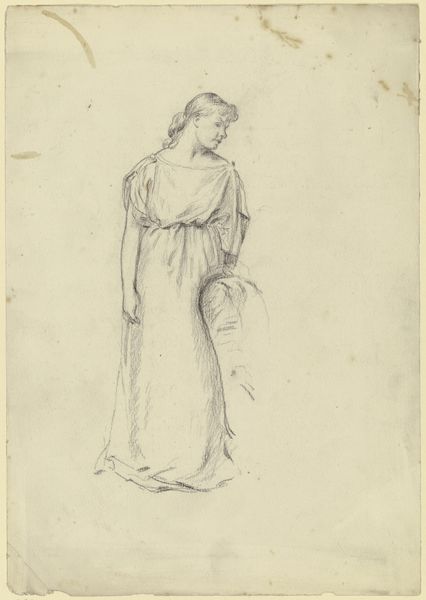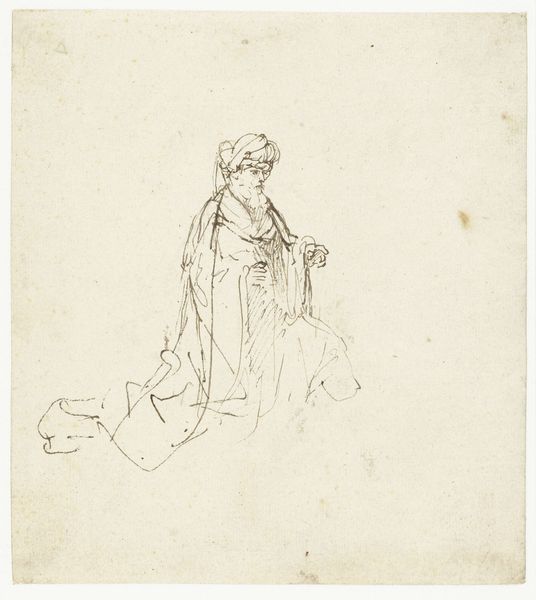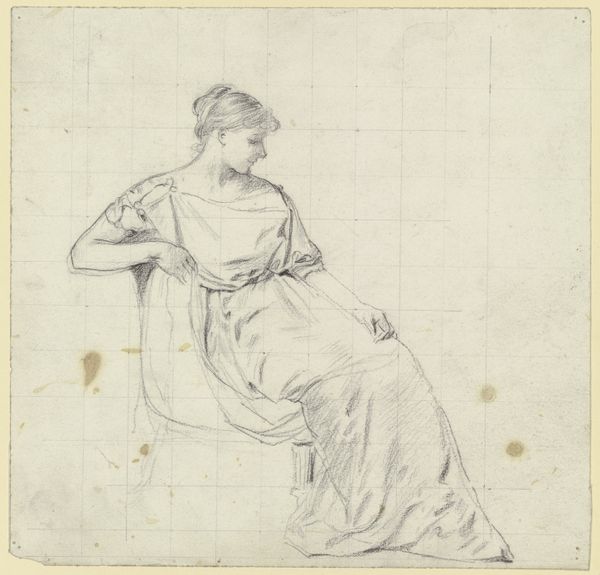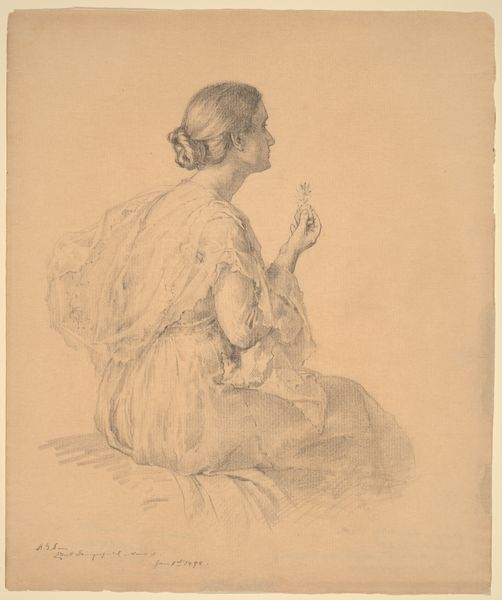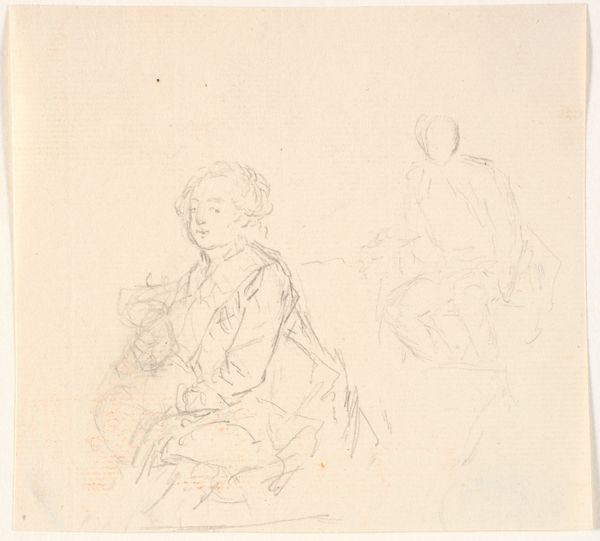
Copyright: Public Domain
Curator: Just lovely. It feels so light, so fleeting. A whisper of a moment captured in pencil. Editor: It reminds me of a memory half-forgotten, emerging from the shadows. This is Otto Scholderer's "Woman playing the mandolin," from around 1879, now residing at the Städel Museum. It's a delicate pencil drawing on paper. What do you make of the subject, knowing that context? Curator: Oh, mandolins. Always carrying that slightly melancholic, almost whimsical weight. I can almost hear the faint echo of a tune that never quite resolves itself. And look at the way he's captured the fall of the light on her dress. It's a study in impermanence, isn't it? A moment she will never relive. Editor: Absolutely. The mandolin itself, beyond its sound, has its own iconography. Often associated with serenades, with longing, and the expression of emotions difficult to articulate otherwise. The pose and expression add to it... slightly withdrawn. What emotions does that bring forward for you? Curator: A certain vulnerability. Like she's pouring her soul into those notes, but only for herself. It's intimate, isn’t it? Not performative at all. It feels deeply private, which gives the work as a whole such an endearing charm. Editor: There's that sense of Romanticism there—a longing for an idealized past, reflected in both the style of dress and the artistic approach. It’s as though she’s plucked straight out of a poem from a simpler, maybe more genuine time. What else calls your attention here? Curator: The sketchiness itself is powerful. It embraces imperfection. It makes you realize the beauty is sometimes in the suggestion, not the complete rendering. What's *not* there allows the imagination to dance, to invent its own melody. And to imagine the story surrounding it. Editor: I agree; the incompleteness almost makes the symbol even more vibrant, filling the empty spaces with the viewers own lived history. These visual shorthands allow us all to complete the piece based on our own histories. Curator: Exactly! It’s like Scholderer handed us the bare bones of a dream and then simply whispers, “Go on, you tell it.” And we do, don't we? Editor: Beautifully put. It goes to show how even in the quietest sketches, some deep stories can come out to reveal a much bigger picture.
Comments
No comments
Be the first to comment and join the conversation on the ultimate creative platform.
